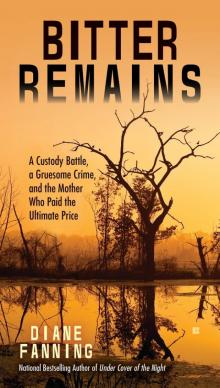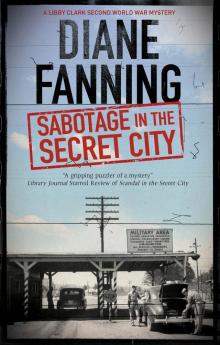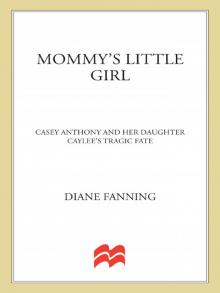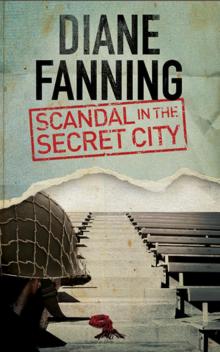- Home
- Diane Fanning
Sleep My Darlings Page 2
Sleep My Darlings Read online
Page 2
Life for teenagers revolved around the high school. To hang out, the kids went to the one “dinky” mall, Happy Joe’s Pizza and Ice Cream Parlor, or Pizza Hut—all fairly typical fare for a rural Midwest community.
Sweet, respectful, and blue-eyed, Julie grew up to be athletic, competitive, and striking. She was always well dressed, her long hair well-kept, and her skin a perpetual tan from her outdoor sports activities.
She and Sylvia Carroll first met in their sophomore algebra class in the brand-new Muscatine High School, situated across the road from an enormous cornfield. They had several classes together over their three years, and both were on the track team: Sylvia as a shot-putter and Julie as a runner.
Julie was one of the stars of that team. She was also a standout on the basketball squad. When she competed, she gave it all she had, wearing purple-and-gold hair ribbons to match her Muskies uniform. As Sylvia Carroll said: “She was the epitome of what wholesome is. You wanted to be like her.”
She graduated with about 350 other students in 1978 and went on to the University of Northern Iowa in Cedar Falls to conquer a new challenge.
CHAPTER 3
The University of Northern Iowa (UNI), located on the west side of the Cedar Falls–Waterloo metropolitan area in northeastern Iowa, began in the late 1800s as Iowa State Normal School. After the turn of the century, it became Iowa State Teachers College, then State College of Iowa before being granted university accreditation in 1967.
When Julie arrived on campus in the fall of 1978, the student body had grown to 10,455, far more than half of them were female, and 97 percent of them were from Iowa. The minority population was low enough to be insignificant: just 210 African Americans and only 32 Hispanic students. More than half of the population majored in liberal and vocational arts, and nearly a third planned on becoming teachers after graduation.
It was an institution whose size and prestige had expanded in the previous decade with building projects of particular importance to Julie and all other physical education majors. The new physical education complex was ready for use in the fall of 1971. It housed a unique floor surface installed especially for volleyball. When Julie arrived on campus, she spent many hours there perfecting her skills, mastering the sport, and competing successfully against rivals.
A far more ambitious project, the UNI-Dome, endured cost overruns, project delays, and storm damage before finally hosting its first official event, a wrestling contest between UNI and Iowa, on February 7, 1976. The dome had serious problems with its fabric roof, causing it to deflate twice in the first two years. But by the time Julie matriculated there it had been stabilized. In addition to sporting events, international music stars—such as Foreigner in November 1978 and Mick Jagger in November 1982—performed during her years at the university.
Julie was well liked at UNI, particularly among the others on her volleyball squad. “She had a strong personality but still was a lot of fun to be with,” teammate Lisa Pilch said. “When you were with Julie, you were laughing a lot.”
Nonetheless, the intensity of her character and competitive spirit often put her at odds with others. She expressed her disapproval in no uncertain terms when she thought a team member was slacking off during a practice. And Julie was as competitive in love as she was in sport. If another woman liked the same guy Julie did, Julie made it clear that she was a rival and that she fully intended to prevail.
Julie’s Division I volleyball squad had a stellar season in her senior year. Julie was the team’s best middle-hitter and blocker—her skills that year honed to a level of perfection that overwhelmed competing players. UNI was favored to make it to the finals that season. When they approached the regional level of play—the last step on their way to the top—everyone on the team assumed that victory was a foregone conclusion. They didn’t count on the flu taking down one of their star players.
Julie succumbed, but her drive to win forced her out onto the court, despite her illness. She gave it her all, but in her weakened state it just wasn’t enough. Her below-par performance led her team to snatch defeat from the jaws of victory. The dream of national prominence disintegrated in the face of a microscopic viral organism.
Julie graduated in 1982 with a Bachelor of Arts degree in physical education and coaching, ending her career at UNI with a nagging regret that she had not achieved the championship.
* * *
After graduation, Julie enlisted in the army and was sent to beautiful Monterey off the legendary and scenic Big Sur highway on the Pacific Ocean; with its rugged coast, near-perfect weather, and a wealth of wineries, the area has often been called paradise on earth. It was the perfect setting for an athletic, outdoor-loving person like Julie Powers.
She had not come there, however, to play—the environment was merely a backdrop. Assigned to the Defense Language Institute Foreign Language Center, in the European and Latin American Language School, Julie was tasked with becoming thoroughly proficient in the Russian language and culture.
The roots of the Defense Language Institute stretched back to the days immediately preceding the entry of the United States into World War Two. In November 1941, the army opened a secret school to teach Japanese at the Presidio of San Francisco, in an abandoned airplane hangar at Crissy Field. Four instructors taught sixty students, predominately second-generation Japanese Americans gathered from up and down the West Coast.
Called the Military Intelligence Service Language School, it moved to Camp Savage in Minnesota in 1942, after Japanese Americans along the Pacific Ocean were moved to internment camps. After the war, the school moved to the historic Presidio in Monterey, originally established in 1770, and was renamed the Army Language School.
In 1963, the language studies of all branches of the military were consolidated into the Defense Foreign Language Program, with headquarters in Washington, D.C. The facility in Monterey became the West Coast Branch of that program. In the 1970s, all the scattered facilities merged at that school and it was renamed the Defense Language Institute Foreign Language Center. The school won academic accreditation in 1979.
The total-immersion language instruction provided there condensed the amount of time required to become proficient compared to the traditional classroom model. The mastery of many of the languages could be achieved in as little as twenty-six to thirty-six weeks. However, when Julie arrived there to study Russian she faced a more intensive and lengthier course of instruction—nearly a whole year’s worth—because of the need to learn the Cyrillic alphabet in order to become equally skilled in listening, reading, and speaking. The school was committed to producing high-proficiency linguists who become lifelong students of the language and culture.
The school philosophy was based on their belief that this depth of learning cannot occur in a vacuum—a student’s comfort with this new form of communication was dependent on an ability to understand the culture, religion, belief and value systems, economic strata, and geopolitical climate of a particular nation. Thus, the curriculum was designed for rapid absorption of the language.
Immersion was the keystone of the program, both in the classroom and in special events such as overnight programs and three-day getaways that placed students in real-life scenarios that required them to use their new language in problem solving. When at the off-site facility, Julie was isolated from everyone who spoke English.
Julie spent those nights in a setting designed like the typical sleeping quarters and kitchens found in the Soviet Union at the time. During the day, she bargained for food and clothing at a marketplace, went through customs, made hotel reservations, and performed other tasks exclusively in Russian.
At the end of her studies in Monterey, Sergeant Julie Powers was an accomplished Russian linguist ready to tackle a real-world assignment with vital implications for national security. The army assigned her to the Eighteenth Military Intelligence Battalion in Munich as a human intelligence collector in 1987.
She was responsible for collectin
g intelligence for European agencies by interviewing refugees coming from the Eastern Bloc. Her responsibilities included supervising and conducting tactical information gathered through debriefings and interrogations in English and Russian for the National Security Agency. She also screened sources and documents to establish priorities, planned and participated in counterintelligence and force protection operations, translated captured documents and open source publications, and prepared reports and conducted analysis.
Julie did well at the school, but there were three experiences in the military that left a sour taste in her mouth: standing still as a tape measure was used to take her body measurements, undergoing the white-glove inspections of her barracks rooms, and having to provide a urinalysis sample in front of female senior officers. All three seemed so invasive and bore a high potential for embarrassment.
Julie took satisfaction in winning one battle against the system of regulation and obedience. It centered on her pink Cannondale bicycle, an innovative high-performance touring bike with an oversized aluminum frame and fat-tubed look that made its light weight surprising. Priced far higher than a typical amateur bicycle, it was one of Julie’s treasured possessions. She always brought it inside and parked it in her living room.
One time, during inspection, a sergeant told her that a bike sitting inside was not acceptable. The sergeant with him came to Julie’s defense, saying, “That bike is worth more than your car, Sergeant.” Julie was allowed to keep it inside.
Other downsides of her work in the office included her loathing of the electric typewriters she had to use and having a co-worker whose paper cuts always seemed to be bleeding all over her carbon-copy reports. Outdoors, Julie frequently cursed the cobblestones paving McGraw Street that trashed the heels of her pumps.
She had a lot of upsides to her posting, too. She really loved the work and living in Bavarian Germany. Bavaria was one of the oldest states of Europe and the largest state in contemporary Germany, covering 20 percent of that nation’s landmass. The area has always been steeped in traditions different from those in the rest of the country—even their religion was different. The majority of Bavarians were Catholic while most Germans were Lutheran. And the Bavarian fondness for their distinctive regional food and drink is legendary.
One of Julie’s favorite Bavarian experiences was the fun and camaraderie of the Starkbierfest, or Strong Beer Festival, an annual three-week-long celebration of stout drinking that takes place during Lent. Most of the time, Christian religious observances called for decorum and abstinence at that time of year. Not in Munich—not during Lent, at least not since 1773. In that year, Brother Barnabas, a monk at the Paulaner monastery in Munich, wanted to ease the deprivation the brotherhood endured with fasting and refraining from solid food during that religious season. Although eating was forbidden, drinking was not, so he created the perfect solution. He brewed a batch of strong beer—a process that used less water and left more grain in the beverage—and named it Salvator. One liter contained the equivalent amount of grain a person would get by eating sixteen loaves of bread. His brothers loved it, but they worried if it might be too good to be acceptable.
To decide this issue, they loaded up the beer to make the trek to the Vatican to get the pope’s opinion on its acceptability. The barrels bounced around on a horse-drawn flatbed, crossing southern Germany, scaling the Alps, and descending into the alpine valleys. Along the way, the altitude and extreme temperature variances impacted the beverage. They crossed Austria and entered Italy, where temperatures got rather high.
Even after they arrived in Rome, the beer had to sit and wait for weeks until the pope would grant them an audience. When Brother Barnabas went before His Eminence, he explained the concern that drinking his beer would not show the proper penitence required of the devout during Lent.
The pope felt a taste test was in order. What he drank no longer had a taste that bore any resemblance to the strong beer’s original flavor. The pope found the beer stressed by the traveling conditions and temperature and elevation changes vile and undrinkable. He said that if the Munich monks could drink that foul brew they were obviously the most penitent men in all of Christendom.
Originally, the monks were forbidden from serving Salvator to anyone outside of their brotherhood. The rule, however, was repealed in 1780, because the monks never really followed it and the demand from Bavarians on the outside could not be ignored.
With a recipe unchanged for more than two hundred years, the Paulaner Salvator has remained the most well-known of the Starkbiers out of Munich. However, others have eagerly jumped into the strong beer market, creating their own versions of the brew with names such as Triumphator, Maximator, Aviator, Scapegoat, Celebrator, and many more. The Starkbierfest has always overflowed with a diverse variety of taste sensations from the different breweries that participated.
Since these special brews were born in Germany, a country known for its obsession with rules and regulations, strict standards were written into law, dictating minimum percentages of “wort,” the grain solids dissolved in each liter. The beverage was divided into two categories: Bockbier, requiring at least 16 percent wort, and Doppelbock, which needed no less than 18 percent. Bavarian Catholics gladly gave up bread for Lent in exchange for more Starkbier.
When Julie went to her first festival, she absorbed the culture trappings and mimicked the actions of the Germans around her. A woman, beautifully attired in a traditional dirndl, arrived at the table with a handful of cool ceramic steins, foam running down their sides. She placed a liter in front of each person at the table, many of the women dressed in dirndls and men wearing lederhosen.
Mugs raised in unison, hearty voices shouted, “Prost.” Steins clinked and gulps went down throats. Together the containers smacked back down on the table, making it shake. Men wiped the froth from their mouths with the back of their hands and laughter lasted all night long.
As if the sustenance of that hearty beer was not filling enough, the festival abounded in traditional Bavarian food: thick, soft, chewy pretzels with a crispy, salty outer crust paired with a fondue made of cheese and strong beer for dipping; Schweinshaxe, a pig knuckle with a crunchy outer skin; thick hunks of regional cheeses, German potato salad; and corned-beef and sauerkraut sandwiches on rye bread, drowning in melted Swiss.
At her first festival, Julie learned how the short, sober walk from the base to the beer hall transformed into a long, arduous trudge after the consumption of stein after stein of the 8.1 percent brew. Nonetheless, she went back year after year—the torturous walk home was an acceptable price of a night of unabashed fun.
Another high point for Julie in Bavaria was organizing and coaching a volleyball team of officers. She approached the responsibility with energetic enthusiasm.
K. C. Dreller, an intelligence officer who worked with her, said: “She was supergood at it. I imagine she was supergood at everything she did. Anybody that was in that field was a type A personality.” He added that Julie “had a type A personality, but everybody I worked with was one because of the nature of our business.”
It was during her time coaching the men’s volleyball team that Julie’s path first crossed that of rising army officer Parker Schenecker.
CHAPTER 4
Edmund Morris “Eddie” Schenecker was Fort Worth, Texas, born and bred, arriving in the city on June 6, 1933. He made a halfhearted, peripatetic attempt at higher education, attending both Oberlin College, in northeastern Ohio, and Miami of Ohio University (now known simply as Miami University) in southwestern Ohio near Cincinnati. When the Korean War commenced, he escaped the books by joining the army. When his tour of duty was completed, he resumed his education, attending Texas Christian University (TCU) right in his hometown of Fort Worth.
In the late 1950s he developed a passion for New Orleans, where he met his future wife, debutante Nancy Trousdale of Monroe, Louisiana. He frequently said, “I reside in Fort Worth, but I live in New Orleans.” Nonetheless, Edd
ie and Nancy settled down in Fort Worth, Texas, to raise their family. Their first child, Edmund, was born on January 11, 1961. Their second son, Parker, arrived nineteen months later on November 17, 1962.
During World War Two, Fort Worth exploded with growth as a manufacturing center for airplane, helicopter, and other military products. Four years after that conflict ended, an epic flood tore through the city—horses were seen on roofs, eleven people lost their lives, and property damage exceeded $11 million.
The Army Corps of Engineers came to the area, determined to prevent a repeat of the disaster by channelizing the Trinity River and building a sturdy levee system to protect the city from devastation. That improvement heralded a population expansion. By the time the Schenecker boys arrived on the scene, there were more than 350,000 residents in the once rustic town mostly known only for the historic Chisholm Trail feeder routes in the state that merged at the stockyards for the drive north.
Fort Worth was a footnote in an American tragedy when Parker was just one year old. President John Fitzgerald Kennedy checked into the venerable Hotel Texas in the downtown area on Thursday, November 21, 1963. His charismatic personality filled the air over the city with hope, optimism, and faith in the future. No one suspected how little future remained for JFK.
The next morning, under rainy skies, the president addressed an impromptu gathering of two thousand local residents in the hotel parking lot. “There are no faint hearts in Fort Worth,” he told the cheering crowd, and continued to praise the city for its role in the security of the nation. “Fort Worth, as it did in World War Two, as it did in developing the best bomber system in the world, the B-Fifty-Eight, and as it will now do in developing the best fighter system in the world, the TFX, Fort Worth will play its proper part.… Here in this rain in Fort Worth, we are moving forward.”

 Death on the River
Death on the River Bitter Remains
Bitter Remains Gone Forever
Gone Forever Sleep My Darlings
Sleep My Darlings A Poisoned Passion
A Poisoned Passion Through the Window: The Terrifying True Story of Cross-Country Killer Tommy Lynn Sells (St. Martin's True Crime Library)
Through the Window: The Terrifying True Story of Cross-Country Killer Tommy Lynn Sells (St. Martin's True Crime Library) Chain Reaction
Chain Reaction Baby Be Mine
Baby Be Mine The Pastor's Wife
The Pastor's Wife False Front (Lucinda Pierce)
False Front (Lucinda Pierce) Under Cover of the Night
Under Cover of the Night Sabotage in the Secret City
Sabotage in the Secret City Written in Blood
Written in Blood Treason in the Secret City
Treason in the Secret City Wrong Turn
Wrong Turn Under the Knife
Under the Knife Mommy's Little Girl
Mommy's Little Girl Scandal in the Secret City
Scandal in the Secret City